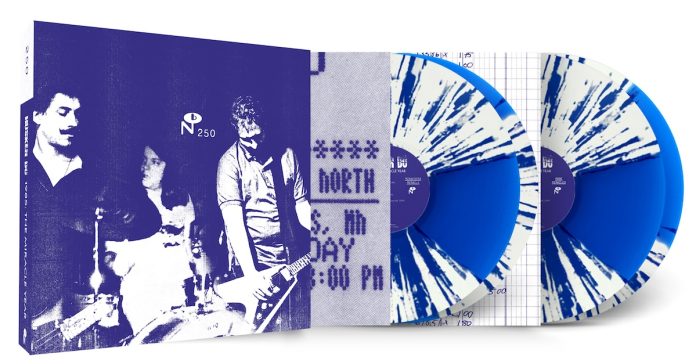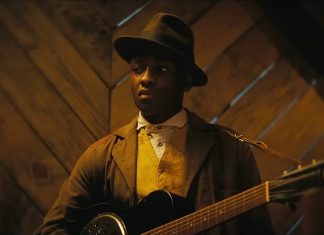Hüsker Dü: The Miracle Year documents a band on the brink of jumping from the independent label SST to signing with major label Warner. By 1985, Hüsker Dü had already started bending hardcore into something more melodic and unpredictable, but these recordings capture the moment when their songwriting and their sonic ambition fused into a single force. Rather than a simple archival dump, this 4-LP/ 2-CD set traces a year when the trio’s chemistry sharpened, their arrangements deepened, and their live shows honed their sound for the next phase of their evolution.
The restored January 30, 1985 First Avenue set is the heart of the release, and the improved fidelity puts the instrumentation front and center. On “New Day Rising,” Bob Mould’s guitar is a wall of sound, but you can really distinguish the layers. The open-string drones are buzzing beneath the main riff, and chords are voiced with a clarity usually lost in the swirl. Grant Hart’s drums hit with vigor, his snare landing precisely in the gaps Mould leaves open. That tight instrumental lattice continues through “It’s Not Funny Anymore,” where Greg Norton’s bass locks into a rounder, more melodic pattern, giving the song a sturdier backbone than past live recordings revealed. Early catalog staples such as “Everything Falls Apart” and “Every Everything” move with breakneck urgency, but the restored mix highlights how much control sits beneath the speed. On “The Girl Who Lives On Heaven Hill,” you can hear Mould pushing his guitar into near-metal territory, bending chords until they smear into overdriven harmonics, while Hart mirrors the vocal phrasing with clipped tom fills.
The run of New Day Rising and Flip Your Wig material reveals the band’s pivot toward more structured arrangements. “Makes No Sense at All” carries a punchier low end than expected, Norton outlining the chord movement so cleanly that Mould can sit on sustained bursts of distortion. “Green Eyes” brings a rare lightness, its jangly guitar figure glinting through the haze, while “Divide and Conquer” shows the trio in tight formation, each instrument carving its own lane without sacrificing intensity. Zen Arcade material thrives in this context. “Pink Turns to Blue” gains new focus with distinct bass presence guiding the chord changes. “Broken Home, Broken Heart” lands with punk immediacy, but Hart’s shifts between straight-ahead pounding and subtle syncopation add contours that older tapes tended to swallow. Beatles and Troggs covers, “Helter Skelter,” “Ticket to Ride,” and “Love Is All Around,” show how Hüsker Dü approached reinterpretation: keep the structure, amplify the energy, and let the instrumentation dictate mood.
The Miracle Year doesn’t just document Hüsker Dü at full throttle; it serves to reframe a band often remembered for volume as one built on interplay, craft, and musical instinct. For longtime fans, this is the clearest window yet into a period when the trio was remaking underground rock in real time. For newer listeners, the set serves as both a history lesson and a gateway. It’s a reminder that Hüsker Dü’s legacy isn’t just about speed or intensity, but about how three musicians stretched the boundaries of what a power trio could be.






